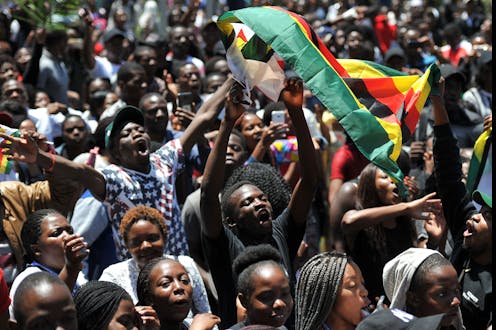Source: The Conversation – Africa (2) – By Susan Goldstein, Associate Professor and Director of the SAMRC/Wits Centre for Health Economics and Decision Science – PRICELESS SA (Priority Cost Effective Lessons in Systems Strengthening South Africa), University of the Witwatersrand
Non-communicable diseases such as diabetes, hypertension and cardiovascular conditions account for over 70% of global deaths annually.
In South Africa, non-communicable diseases cause more than half of all deaths. Diabetes ranks as the second leading cause after tuberculosis.
A major contributor to rising diabetes rates is the high consumption of sugar-sweetened beverages, including cooldrinks.
The World Health Organization recommends a tax of at least 20% on sugary drinks as an effective tool to help reduce consumption and curb related health risks.
South Africa introduced a tax on sugar-sweetened beverages, officially known as the Health Promotion Levy, in 2018.
The tax applies at R0.0221 ($0.0012) per gram of sugar beyond a 4g/100ml threshold, amounting to an 8% of final selling price. The tax has increased slightly since it was introduced, but not in line with inflation. The Health Promotion Levy therefore falls short of the original 20% target as industry pressure led to a watered-down version of it.
I lead the South African Medical Research Council/Wits Centre for Health Economics and Decision Science – PRICELESS SA, which has been studying various aspects of the levy for over 10 years.
PRICELESS SA is still in the process of measuring the health and financial impact of not implementing the Health Promotion Levy at the recommended 20%. A lack of recent data adds to this challenge. But it is worth noting that the World Obesity Report shows that obesity is still a severe problem in South Africa.
Without interventions, obesity in South Africa is projected to affect 30 million adults and 10 million children by 2035. In 2019 there were 55,238 deaths in South Africa from non-communicable diseases attributable to obesity, and with an annual increase of 2.3% in obesity, deaths are going to increase.
Taxing sugary beverages is effective
Despite the sugar industry’s claims that the Health Promotion Levy is ineffective, global evidence strongly suggests otherwise. Countries that have implemented such taxes have seen significant declines in sugar consumption.
Sugar-sweetened beverage taxes have been implemented in 103 countries and territories globally and have been shown to be effective in many countries.
In Ireland there was a 30.2% reduction in sugar intake through these beverages.
In California a study showed a decrease in overweight and obesity among young people living in cities where there was a sugary beverage tax.
In Mexico, a sugar-sweetened beverages tax at 1 peso ($0.05) per litre was introduced in 2014, and by 2016, sugary drinks sales had dropped by 37%.
Similarly, in the UK, a tax introduced in 2018 led to a 35.4% reduction in sugar consumption from taxed beverages.
The levy has had a positive impact in South Africa. Studies show decreased purchasing of these beverages. There were greater reductions in sales among lower socioeconomic groups and in sub-populations with higher sugary drink consumption.
Mean sugar from taxable beverage purchases fell from 16.25 g/capita per day from the pre-health promotion levy announcement to 10.63 g/capita per day in the year after implementation.
Lower-income households, which initially purchased more taxable sugary beverages than wealthier households, showed the most significant reductions in consumption after the tax was enforced.
This is particularly important as non-communicable diseases disproportionately affect poor and vulnerable populations.
Stronger taxation on sugary beverages not only decreases consumption but also encourages reformulation by manufacturers, leading to healthier products.
The levy does not cause job losses
Sugar-related industries often argue that the tax has led to massive job losses.
Our research contradicts these claims.
A recent study carried out by PRICELESS SA, funded by Bloomberg Philanthropies through the University of North Carolina and the South African Medical Research Council, showed no significant association between the levy and employment levels. It showed that the levy had not been associated with job creation or job losses in sugar-related industries. These include agriculture, beverage manufacturing and commercial enterprises that sell food and beverages.
The study suggests several factors that may explain this:
Firstly, firms may reallocate labour within their operations rather than
cut jobs.
Secondly, many beverage producers have responded to the tax by reformulating their products, reducing the sugar content and using non-nutritive sweeteners rather than reducing production.
Thirdly, demand for taxed sugary drinks has not declined enough to affect employment.
Finally, consumers often switch to untaxed alternatives produced by the same companies, preventing financial losses to the industry.
Increasing the levy is beneficial to the public purse
The recent delay of South Africa’s budget speech, due to disagreements within the government over the proposed value added tax increase of two percentage points, highlights the urgent need for additional and alternative revenue sources.
South Africa’s health system is experiencing a massive financial burden due to overweight and obesity, costing R33 billion (US$1.78 billion) annually. This expense accounts for 15.38% of the government’s health expenditure and 0.67% of the country’s GDP. On a per-person basis, the annual cost of overweight and obesity is R2,769 (US$150).
On the other hand, the levy generated R5.8 billion (US$313m) in revenue over its first two fiscal years.
Beyond raising funds, a higher tax rate would provide public health benefits and savings for health services.
Based on our research, increasing the levy to 20% in South Africa could reduce obesity rates by 2.4 to 3.8 percentage points, prevent 85,000 strokes, and save 72,000 lives over two decades.
These improvements potentially save over R5 billion (US$270m) in medical costs.
Unlike other taxation measures, which affect all consumers equally, the levy primarily targets discretionary purchases, making it a fairer fiscal tool.
Therefore, government must act – raise the Health Promotion Levy to 20% and cut the sugar-fuelled health crisis at its root.
Raising the levy to 20% would be a smarter tax for a healthier nation.
Darshen Naidoo, Legal Researcher and Associate Lecturer at PRICELESS SA, University of the Witwatersrand, Johannesburg contributed to the article.
![]()
Susan Goldstein on behalf of PRICELESS receives funding from the Bloomberg Foundation, the SAMRC and the National Institutes for Health Research
– ref. Sugary drinks are a killer: a 20% tax would save lives and rands in South Africa – https://theconversation.com/sugary-drinks-are-a-killer-a-20-tax-would-save-lives-and-rands-in-south-africa-251393



